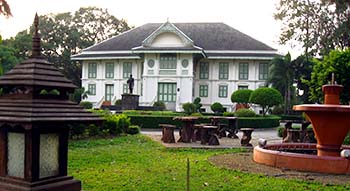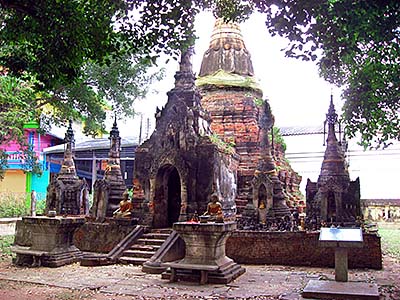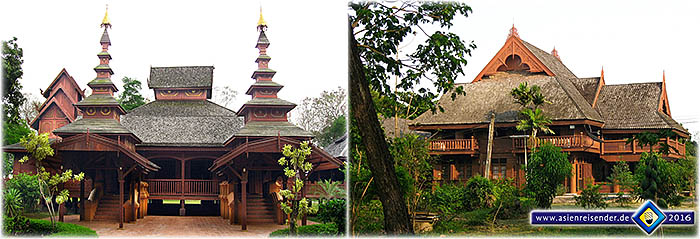Phrae
Phrae is a charming place in the northern region of Thailand. The town has a pretty well conserved old city with an almost complete (partially restored) city wall and four impressive gates. Many of the houses in the old town are still built in the traditional way with teak wood. Situated on a plain at the banks of Mae Nam Yom (Yom River), Phrae is surrounded by mountains.

A manor in a park in the center of Phrae's old town. Image by Asienreisender, 4/2011
West of town stretch the Phi Pan Nam Mountains, who reach altitudes of about 500m. East of town stretches the Phlueng Range, mountains who are about 800m high. Some 18km north of town is a canyon with impressing sandstone formations.
It's easy to walk around in the small place. Even the bus station is not far outside. Only very few tourists make it to this nice place.
A (very) Short History of Phrae

An ancient Chedi in Phrae. Image by Asienreisender, 4/2011
Phrae became in the 19th century a center of the teak wood trade. A number of Burmese teak traders settled down here and a good part of the buildings, namely the temples, represent Burmese style.
The place's founding time dates back to the 11th century; the founding fathers were Mon People from the Dvaravati Culture of Hariphunchai. Similarly to the two Mon founded towns Lamphun and Lampang, Phrae's basic shape is an oval.
King Ramkhamhaeng's expansion of the Sukhothai kingdom also covered Phrae. In the 15th century the town became part of the kingdom of Lanna. However, there were also times of independence from other kingdoms. As a stand-alone principality, it was known under the name Wiang Kosai.

This building style is not only traditional but also far away from the architecture of Siamese central Thailand. The building left is clearly of Burmese origin. Images and photocomposition by Asienreisender, 4/2011, 2016